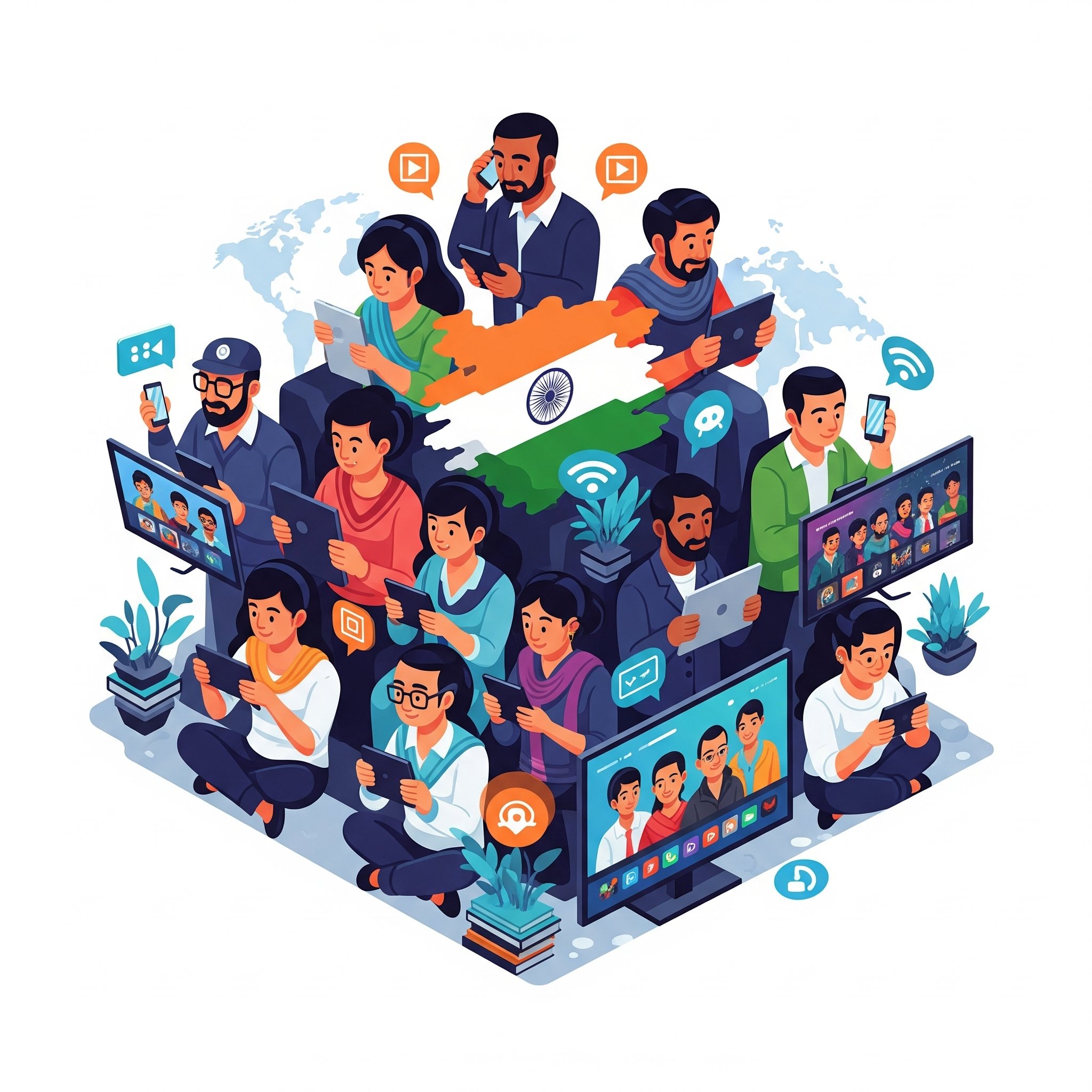Beyond Borders: How Animation Unlocks a World of Untapped Audiences (and Why India is Calling)
Sometimes you realise you're missing something right in front of you. For me, that moment arrived during a recent event at SXSW London. As the focus landed squarely on the ever-expanding world of international content creation, a question struck me: Do clients need to choose between localised and global content, or can you easily and cheaply do both? We've known for a while that many of our clients create multiple versions of what we do for various international marketing efforts – it’s often called versioning. This involves everything from translating dialogue to swapping out cultural touchstones. The potential here, especially with new insights, is huge. We're talking global expansion, creative superpowers, and knocking down some seriously outdated barriers. In business, success comes to those prepared to do something different, and it's a path we've been on all along.
The specific trigger for all this was a truly insightful session at the UK House during SXSW, which celebrated the new UK/India trade agreement [Link to UK Gov Trade Agreement if relevant]. The buzz highlighted how our creative industry in the UK can now freely work with the Indian creative industry and vice versa. It's officially a priority industry for the UK's industrial strategy and growth [Link to UK Industrial Strategy if relevant].
So let’s talk about India. Forget the stereotypes for a second. We're talking about a country with a staggering billion active screens [Link to relevant stats/report if available]. Yes, you read that right. A billion. That’s not just a market; it’s a universe of potential viewers, consumers, and collaborators. Yet, for so many brands and content creators, this massive audience remains largely untouched. Why? Because many still see language as the ultimate barrier. And frankly, it shouldn't be.
The UK House event drove this point home with some truly staggering examples from the music industry. It was mentioned that only recently did massive acts like Ed Sheeran and Coldplay start touring India. But once they did? They didn't just tap into a market; they unleashed a tidal wave. The anecdote shared was incredible: for Coldplay’s few shows, the queues for tickets were so long, they could have sold out 26 additional shows. That's a pretty big untapped demand just waiting to be met.
Think about it. We live in an increasingly visual world. Social media feeds are a kaleidoscope of images and short videos. Emojis have practically become a universal dialect. And what sits at the heart of this visual language? Animation.
It’s the language of the world, quite literally. Ever wondered why almost every international airline, regardless of its origin, uses animation for its safety videos? It’s not just to make the dry information palatable (though it certainly helps). It's because animation transcends linguistic boundaries. A clear visual demonstration of how to put on a life vest, or where the emergency exits are, is understood whether you speak Mandarin, Marathi, or Mancunian. No translation needed, no nuances lost in subtitle-hell. It’s direct, universal, and incredibly effective.
[Image: An engaging animation illustrating universal understanding, Alt Text: "Animated characters demonstrating a concept, showing how animation transcends language barriers"]
This isn’t just about safety, though. This is about storytelling, brand building, and connecting with people on a human level, no matter their mother tongue. Imagine the possibilities for a brand looking to launch a product in India. Instead of painstakingly translating complex marketing messages into dozens of regional languages, battling cultural nuances and potential misinterpretations, they could deploy an engaging, animated video. A character-driven short that demonstrates value, evokes emotion, and resonates visually. The core message is delivered universally, and perhaps only a small amount of localised voiceover or simple text is needed for specific details.
This isn’t about replacing spoken language entirely; it’s about making it secondary to a powerful visual narrative. It's about crafting content that speaks to the human experience first, bypassing the very real complexities of linguistic diversity. It turns a potential barrier into a bridge, offering a trustworthy path to new audiences.
The creative industry is primed for this. Our animators, illustrators, and visual storytellers are already fluent in this universal language. We’re already building worlds and characters that evoke emotion without uttering a single word. The UK’s focus on creative growth, combined with the explosive digital landscape of places like India, presents an unprecedented, cutting-edge opportunity.
So, for all the UK creatives out there eyeing new horizons, or for brands struggling to connect with truly global audiences, it’s time to rethink. That billion-screen market in India? It’s not waiting for perfect translations; it’s waiting for compelling stories. And as Ed Sheeran and Coldplay found out, when you finally show up, the demand is absolutely pretty big. Increasingly, those stories are being told in the vibrant, borderless, and universally understood language of animation. It’s time to swap those language textbooks for storyboards and truly go global.

